- Arthropoda (Arthropods)
- Mantodea (Mantids)
-
Insecta

Euscorpius alpha (Caporiacco, 1950) und Euscorpius italicus (Herbst, 1800) in their (southern Ticino, Switzerland)
In July 2011 I went to the southern part of the Ticino to look for Euscorpius alpha and E. italicus. Beforehand, I heard from different sources that the populations have been rapidly decreasing in numbers over the last years (BRAUNWALDER, STEG 2011), but upon arriving in the targeted area I found some E. alpha within a few minutes.
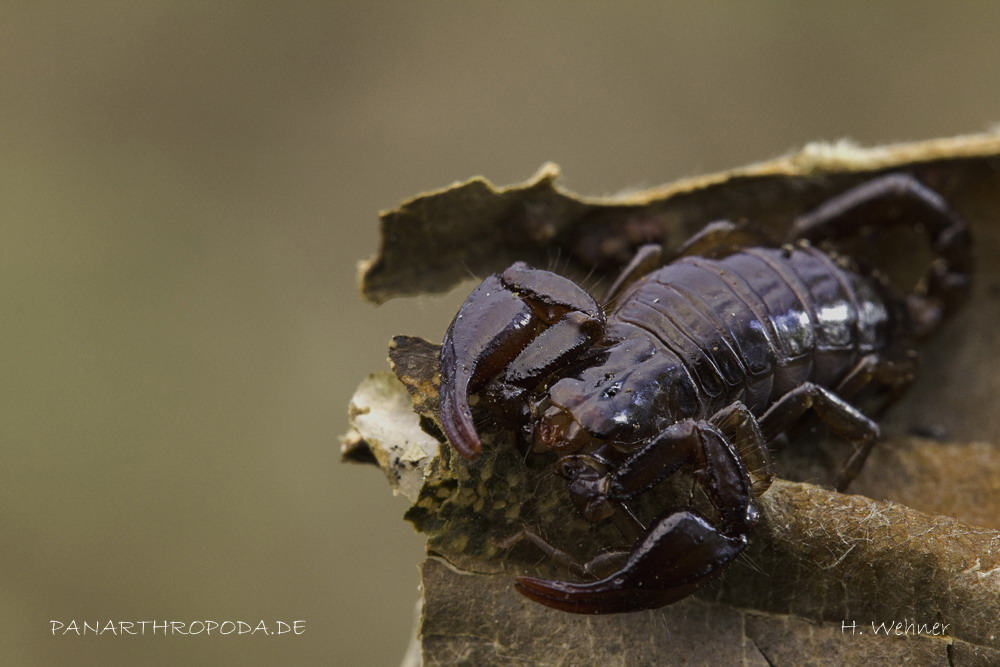
Adulte female Euscorpius alpha
This continued throughout the rest of my stay. On every suitable spot I found both species in varying numbers.
Either the area I visited hadn't yet fallen victim to the decreasing populations or the animals used to dwell there in even higher numbers in the past.
Possible reasons for dwindling populations could be (to name just two) the use of pesticides and the fact that the stone-walls these scorpions use to live in get more and more grouted, especially close to villages.
This may hit E. italicus even harder, since they usually live in those walls near villages, while E. alpha prefer those walls located in or near forests.
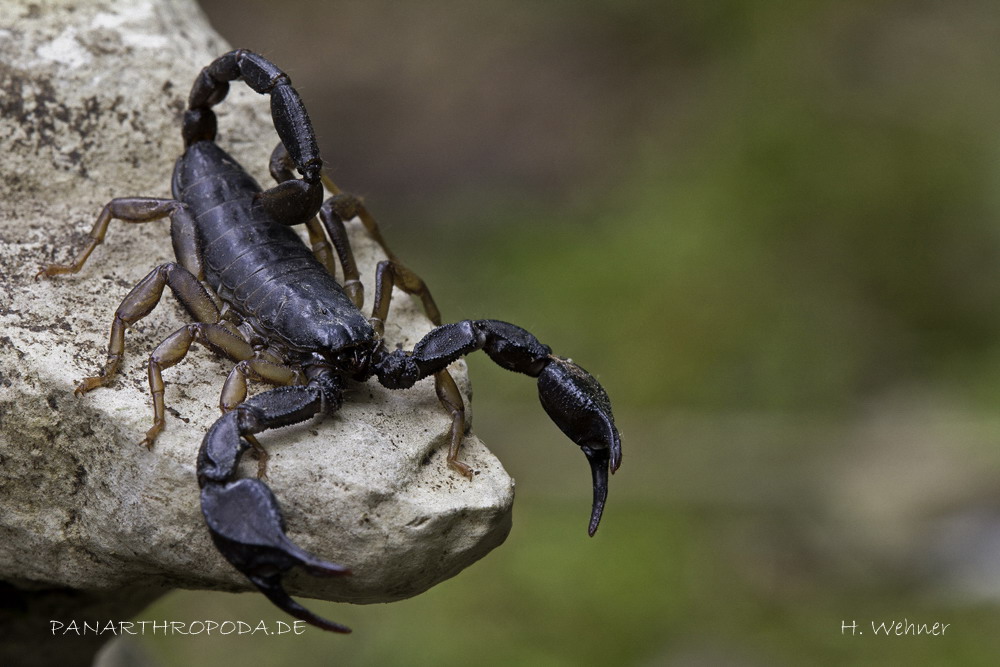
Adulte male Euscorpius italicus
I found walls which started out in the forest, where I found only E. alpha. When these walls reached out of the forest and thus the microclimate changed, so did the scorpion-species. Outside the damp forest, exposed to the sun, I suddenly found only E. italicus in the exact same wall.
An intermediate zone, where both species were mixed close to each other, wasn't found.
Between specimen of the two species there always were around 2-3m difference.
During the day, the temperatures in the habitat alternated between 18°-27°C and between 15-20°C at night.
The temperature-peaks were to be found rather where E. italicus lives, while the temperatures were lower in the forest areas of E. alpha.
I also measured the temperatures in the cracks of the walls, where the scorpions have their hiding places. There the temperatures reached between 18-20°C at day and 14°-17°C at night. Here too, the spots where E. alpha was found, used to be the cooler ones.
While E. italicus lives in a relatively dry environment (stone-walls/stones exposed to the sun), E. alpha prefers a higher humidity (stone-walls/stones in or near forests, even right next to little streams.
Possible predators found in the habitat were various spiders (I found spiderwebs with rests of scorpions in them) and lizards (Podarcis muralis, Lacerta bilineata). Besides those, some colubrids, cats, hedgehogs and other animals are also possible predators.
When I checked for likely prey, I found various crickets and grasshoppers, springtails, snails, cockroaches, woodlice and jumping bristletails (Lepismachilis y-notata).
Further it seems that the timespan of mid-/end-july to beginning of august is most likely the season where gravid females give birth, since nearly every female specimen I found was highly gravid or already had young on its back.
There were more female specimen found than male ones in both species, this was even more so for E. alpha.
Pictures of the habitat of Euscorpius alpha


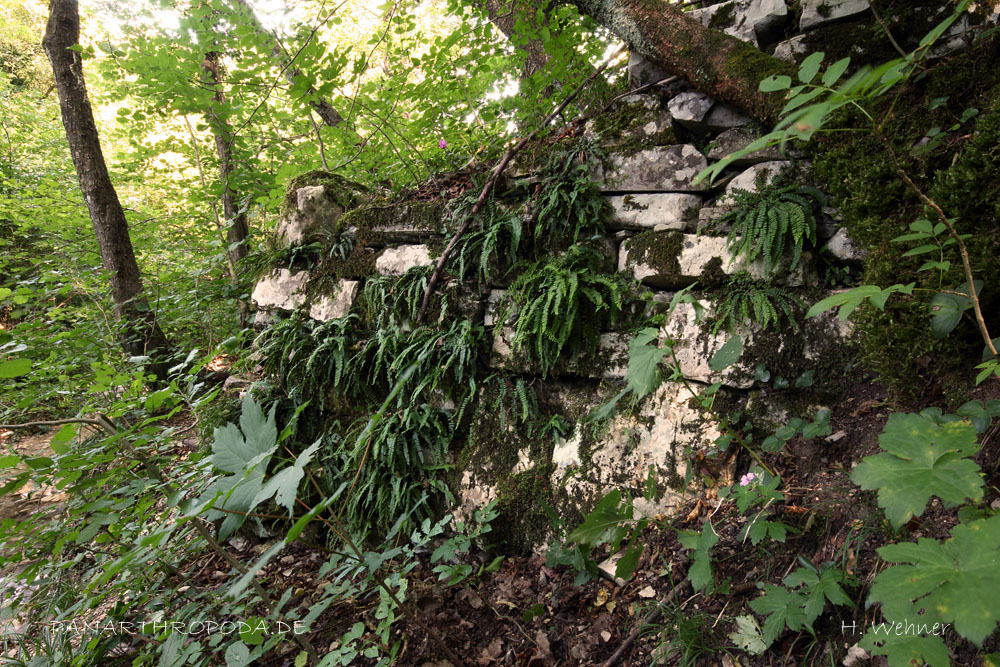
Pictures of the habitat of Euscorpius italicus
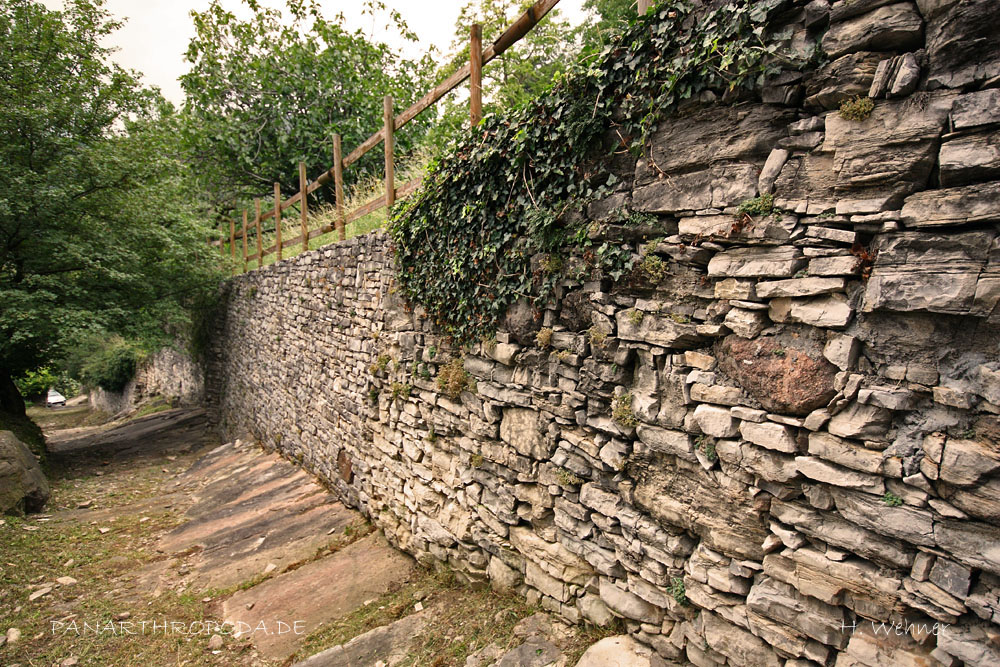
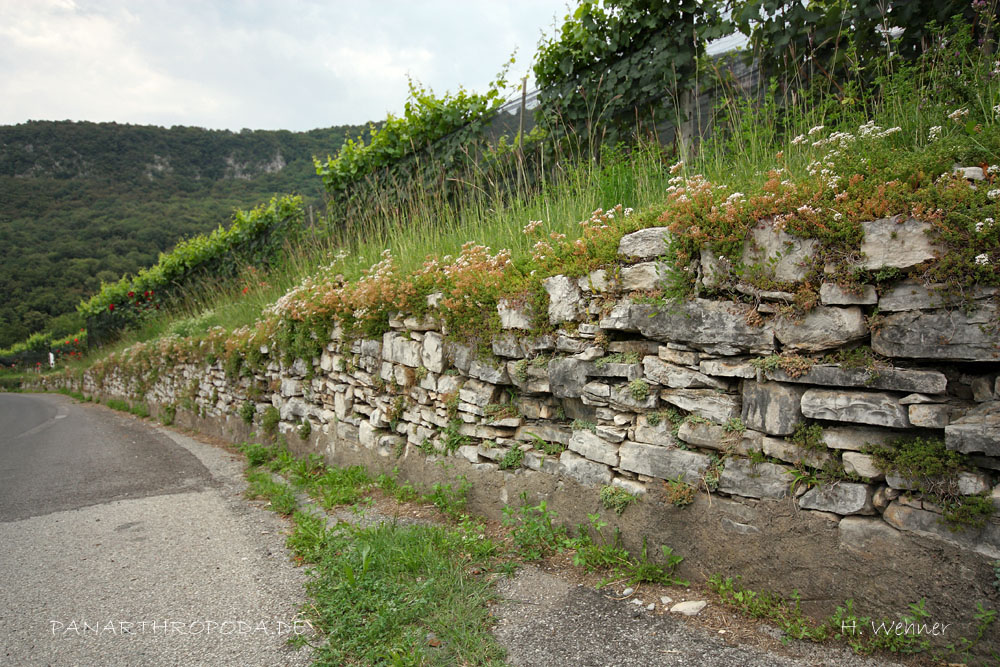
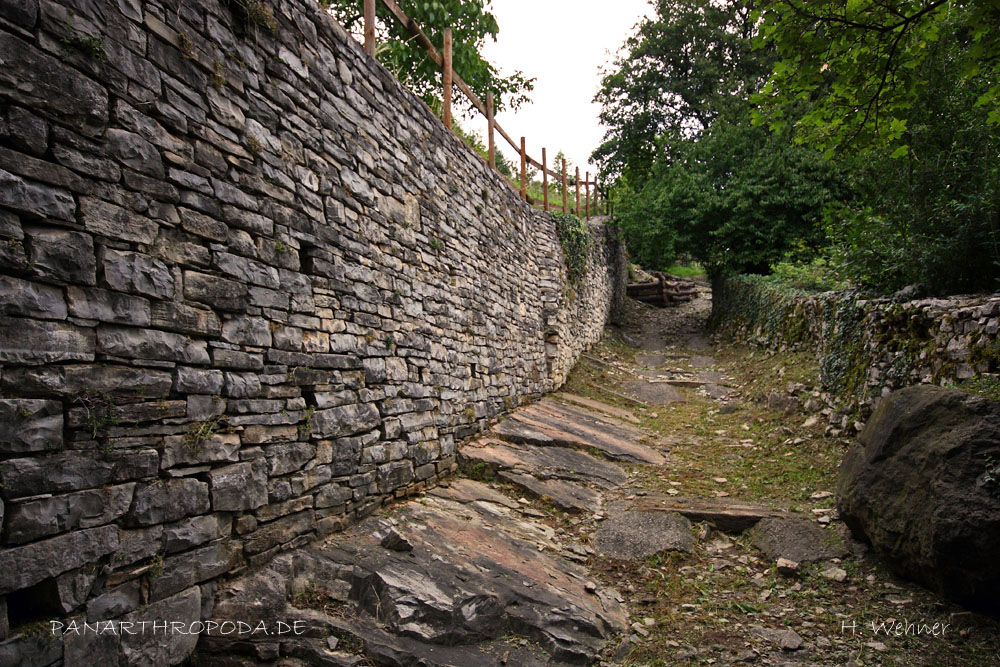
For further information on keeping and the habitat of these two species:
Euscorpius alpha (Caporiacco, 1950) and Euscorpius italicus (Herbst, 1800) at the Monte San Giorgio (Southern Switzerland) with Identification, Sexing, Keeping in captivity, diseases and hemispermatophores size comparison
H. Wehner, verfasst 2011